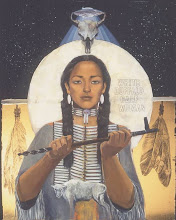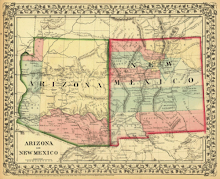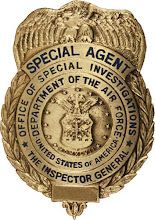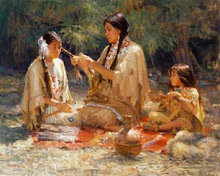By Steve Hammons
The official name was "An Ordinance for the Government of the Territory of the United States North West of the River Ohio." The new and evolving government of the recently-established nation called the United States of America passed the measure on July 13, 1787.
The Northwest Ordinance of 1787 established several important elements in acquiring and organizing the “Northwest Territory” that included the future states of Ohio, Indiana, Michigan, Illinois, Wisconsin and part of Minnesota. These lands had previously been claimed by the British and French.
Native American tribes who had lived in that region for thousands of years were trying to deal with Spanish, French and British competition and warfare in North America. And now, the mostly Anglo, Scots-Irish and Scottish colonists in the east had rebelled against England and started their own nation.
As more European immigrants were heading for a better life in the new United States of America, there were big plans in the works to expand the nation into those American Indian lands to the west. The Northwest Ordinance authorized the cash-starved U.S. government to start selling off large swaths of land to investors and settlers, beginning in southern Ohio, as the Native Shawnee and other tribes were being forced out.
The Northwest Ordinance defined how sections of the Northwest Territory would be divided, governed and the steps to become a state. Ohio became the first new state from the Northwest Territory in 1803. The ordinance also set guidelines for public education, “natural rights” (human and citizen rights) and slavery.
NEW MANAGEMENT
As historian David McCullough explained in his 2019 best-seller “The Pioneers,” some of the authors of the Northwest Ordinance also established a land company of Revolutionary War vets, government officials and others called the Ohio Company of Associates.
This group acquired a large piece of land in “the Ohio Country,” specifically in far southeastern Ohio near the already-established and fortified frontier outpost Fort Harmar at the mouth of the Muskingum River at the Ohio River. This land acquisition is known as the Ohio Company Purchase.
When settlers arrived, they built a fortified settlement called Campus Martius across the Muskingum River from Fort Harmar. The Ohio Company first obtained land that now includes the current Ohio counties of Washington, Meigs, Gallia, Lawrence and Athens. They later expanded that acreage.
They also planned to establish a school of higher learning in these lands. About 25 miles down the Ohio River, then northwest up the Hockhocking River another 25 miles deeper into Ohio, the town of Athens was founded. The school they established there became Ohio University, formally founded in 1804.
Even today, words from the Northwest Ordinance of 1787 are engraved on one of the campus gateways of the main College Green of Ohio University: "Religion, morality and knowledge being necessary to good government and the happiness of mankind, schools and the means of education shall forever be encouraged."
On another historical gateway entrance to the Ohio U. College Green are inscribed the words, “So enter that daily thou mayest grow in knowledge wisdom and love.” When leaving the College Green via the same gateway, you will see the words, “So depart that daily thou mayest better serve thy fellowmen thy country and thy God.”
Another large land purchase would be made further southwest and west along the Ohio River, north of the fortified settlement later named Cincinnati. The name was related to a veterans organization of officers of the Revolutionary War Continental Army. It originates with an early Roman leader named Lucius Quinctius Cincinnatus.
After more warfare, the regional Shawnee, Miami (Myaami) and other Native American tribes would be militarily pushed out of this area, though some remained on temporary reservations in northwest Ohio after the final defeats.North of Cincinnati, Quaker settlers had found good farm country and acquired land through the Symmes Purchase, also known as the Miami Purchase. Many of those Quakers, or Friends as they are known, tried to help the Shawnee and other Indians by teaching farming, grain milling, livestock management and other “civilized” European ways, including spirituality, language and education, and the roles of women and men.
Some Quakers were moving west from Pennsylvania and points east. Some were now moving from Virginia and former southern colonies to north of the Ohio River, into southern Ohio. This is because the Northwest Ordinance outlawed slavery in the Northwest Territory.
NATURAL RIGHTS
The Ordinance of 1787 also strengthened the concept of “natural rights,” which would be seen later in the Bill of Rights. These included property rights, religious freedom, trial by jury, and prohibition of excessive fines, and cruel and unusual punishments.
Article 6 of the ordinance also addressed the issue of slavery. It prohibited slavery in the Northwest Territory but allowed for the capture and return of those who had escaped or were escaping slavery.
The section stated: “There shall be neither slavery nor involuntary servitude in the said territory, otherwise than in the punishment of crimes whereof the party shall have been duly convicted: Provided, always, That any person escaping into the same, from whom labor or service is lawfully claimed in any one of the original States, such fugitive may be lawfully reclaimed and conveyed to the person claiming his or her labor or service as aforesaid.”
At that point, the Ohio River became the legal and cultural boundary of slavery and non-slavery regions. The Northwest Ordinance’s Article 6 is reportedly quoted directly and verbatim in the Thirteenth Amendment to the Constitution (1865) that outlawed all slavery in the U.S.
The natural rights and legal rights of the Native American tribes in the Ohio Country and the rest of the Northwest Territory were also addressed in the ordinance. Section 8 noted legal procedures for transfer of land ownership related to, “… parts of the district in which the Indian titles shall have been extinguished …”
Section 8 stated, “For the prevention of crimes and injuries, the laws to be adopted or made shall have force in all parts of the district, and for the execution of process, criminal and civil, the governor shall make proper divisions thereof; and he shall proceed from time to time as circumstances may require, to lay out the parts of the district in which the Indian titles shall have been extinguished, into counties and townships, subject, however, to such alterations as may thereafter be made by the legislature.”
Another part of the ordinance related to the Native people states, “The utmost good faith shall always be observed towards the Indians; their lands and property shall never be taken from them without their consent; and, in their property, rights, and liberty, they shall never be invaded or disturbed, unless in just and lawful wars authorized by Congress; but laws founded in justice and humanity, shall from time to time be made for preventing wrongs being done to them, and for preserving peace and friendship with them.”
However, many regional Indians had not agreed to surrender their lands and ancestral homelands to the investors and settlers under the Northwest Ordinance. The Shawnee of central and southern Ohio, along with the Miami or Myaami of western Ohio and Indiana, and other Native allies continued fighting against the takeover of their territories.
Many of the original tribes of the region were forced to various points west including Kansas, Missouri and to “Indian Territory” of Oklahoma.
Over time, more sections of the Northwest Territory would be taken over and divided into states. Ohio gained statehood in 1803, Indiana in 1816 and Illinois in 1818. Michigan, Wisconsin and Minnesota became states in the following years.
(Related articles “Storytelling affects human biology, beliefs, behavior” and “Reagan’s 1987 UN speech on ‘alien threat’ resonates now” are posted on the CultureReady blog, Defense Language and National Security Education Office, Office of the Undersecretary of Defense for Personnel and Readiness, U.S. Department of Defense.)

























































































































































































